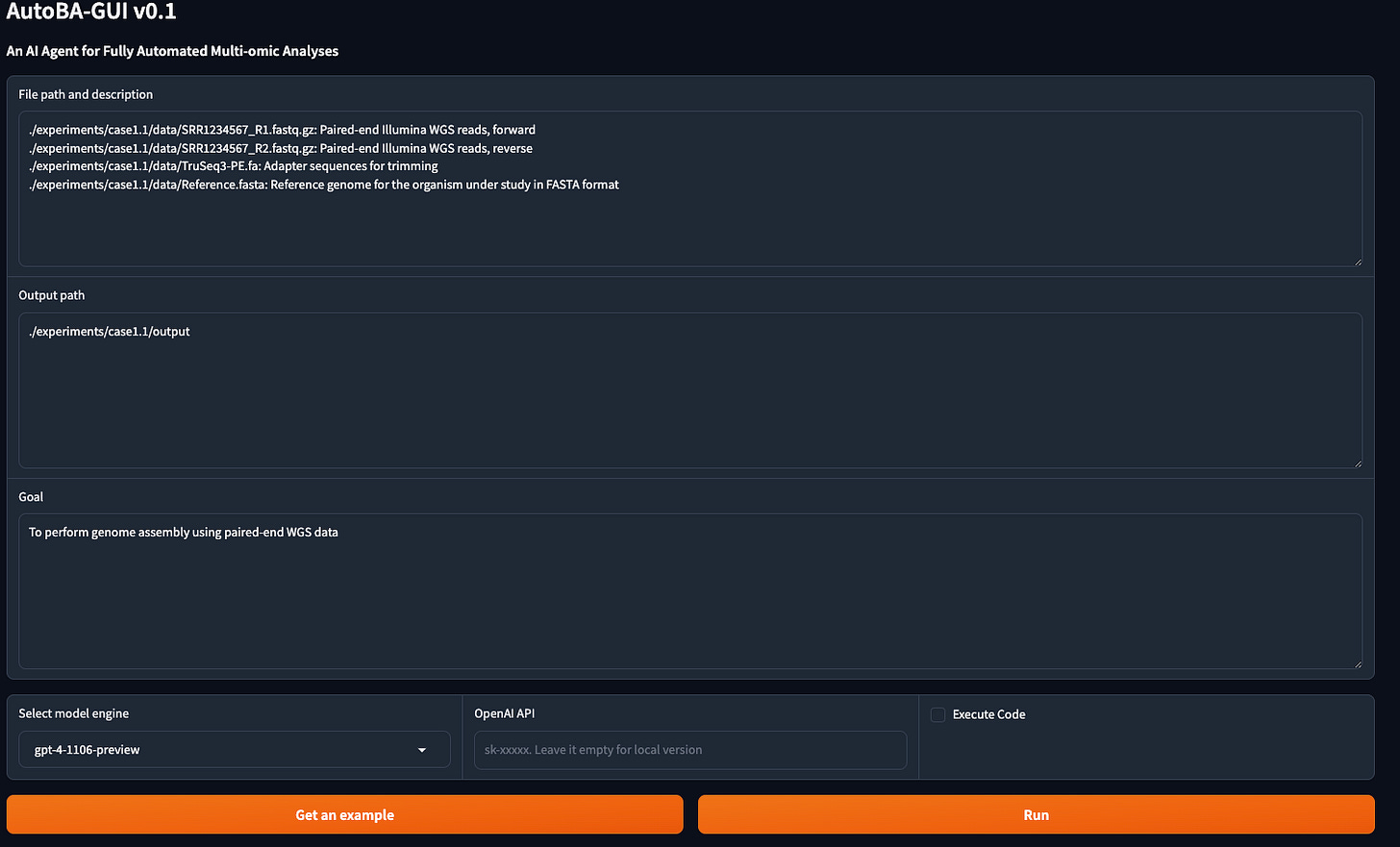AutoBa: Bioinformatics LLM
Welcome to the first “Deep Dive“ series where we bring to you some cool AI tools that will have a strong impact in Life Science. In each episode, we bring an exclusive interview with the main developers behind cool tools and we tell why the tool is important, what it does and what the future holds!
Today we present AutoBa, the first chat-based tool to run bioinformatics analysis! We have interviewed one of the main developers, Juexiao Zhou, a PhD candidate at the King Abdullah University of Science and Technology University, who shed some light on why Autoba was created.
🛑 The Problem
There are two types of bioinformaticians. The ones designing and developing tools and the ones using existing tools. The latter is the majority of bioinformaticians, who tend to use many existing tools to get to the answer they are looking for. Getting the insights you are looking for is not an easy process: you need to know the tools to use, how to combine them (since normally you need to run multiple tools), how to do quality control, which parameters to use, how to install the tools … and especially how to troubleshoot the problems at each step of the flow! The result: a high entry barrier to do bioinformatics analysis.
🚀 The Idea
The goal of Juexiao and the team is to make it simple to run bioinformatic analysis, so simple that you don’t even need to know which tool you need to use! Introducing AutoBA, an Automated Bioinformatics Analysis tool. The idea behind AutoBA is simple: you tell the tool which analysis you want via a chat, and AutoBA will:
Understand the use case
Design a plan and the steps to get to your answer (thanks to GPT-4)
Decide the tools used for each step
Install, run and troubleshoot the tools
Provide you back with the final result
It sounds like magic right !? You can check out a demo in here where you can see what happens under the hood when the user wants to check for differentially expressed genes. While the tool is designed mostly to work in the terminal, you can also deploy a GUI to facilitate the usage ⬇️
How many and which use cases can it actually cover? A lot! AutoBA covers 40+ use cases with the idea to expand to more in the future thanks to the modular framework (you can check out the details below). Check out Juexiao’s paper to learn more about AutoBA!
For those who want a bit more technical details, AutoBA uses a multi-agent system where GPT or Llama2 are used for reasoning, generating the steps, deciding which tools to use and writing the scripts to run the tools. CodeLlama-7b is used for troubleshooting if any problem arises
🔮 The Future
What does the future hold for AutoBA?
Make AutoBa more usable and easier to run (ie. docker)
Expand to more bioinformatics use cases
Expand to different areas. AutoBA is not the latest tool Juexiao’s team is working on. They have already expanded to multimodal LLM for dermatological diagnosis (check out their SkinGPT-4 tool!) and are looking to develop tools to understand video for healthcare applications!
Part of the long-term vision is to expand to wet lab use cases, ie. connect AutoBA with automated labs to carry on experiments … exciting future ahead!
And the best part … all these tools are gonna be open-source!
If you want to get involved, contact Juexiao!




